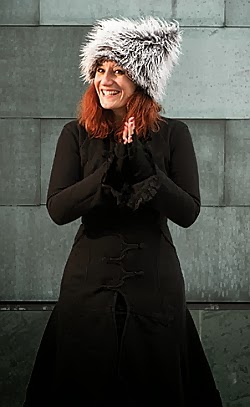 |
| Mmm, like, excuse me. This conversation is kinda like private. Like you wouldn't understand. |
 |
| OMG, I can't believe you'd talk to that fart-chicken, she is such a biznatch, like, I don't want you to talk to her anymore, or I will totally go ape$hit, I mean it! - Inhale, girl, inhale. |
 |
| Ahhh, I'm going all crazy! - Me, too! |
The practice of hiding in plain sight is not new. When ancient Greeks wanted to send a message over great distances, they could not rely on privacy. Messengers could easily be captured and encoded messages deciphered.
The most secure way to send a "private" message was to make sure that no one knew that the message existed in the first place. Historical sources describe the extraordinary lengths to which Greeks went, hiding messages within wax tablets or tattooing them on a slave’s head and allowing the slave’s hair to grow out before sending him or her out to meet the message’s recipient.
 |
| When I hold my fingers like this, in one of my mudras, it means Pat likes me!!! |
 |
| It was all snap googly and insta, man. - What? |
Although these messages could be easily read by anyone who bothered to look, they became visible only if the viewer knew to look for them in the first place. Cryptographers describe this practice of hiding messages in plain sight as steganography.
Children love to experiment with encoding messages. From pig latin to invisible ink pens, children explore hidden messages when they’re imagining themselves as spies and messengers.
 |
| It's like totally complicated (amazon.com) |
And as children grow up, they look for more sophisticated means of passing messages that elude the watchful eyes of adults.
In watching teens navigate public networks, I became enamored of how they were regularly encoding hidden meaning in publicly available messages. They were engaged in a practice that Alice Marwick and I called “social steganography,” or hiding messages in plain sight by leveraging shared knowledge and cues embedded in particular social contexts.
This uses countless linguistic and cultural tools -- including lyrics, in-jokes, and culturally specific references to encode messages that are functionally accessible but simultaneously meaningless.
 |
| Obama and the NSA may spy, but we... XOXO |
Some teens use pronouns while others refer to events, use nicknames, and employ predetermined code words to share gossip that lurking adults cannot interpret. Many teens write in ways that will blend in and be invisible to or misinterpreted by adults. Whole conversations about school gossip, crushes... More + AUDIO
Online, researcher says, teens do what they've ALWAYS done
With a Ph.D. from UC Berkeley, a Masters from MIT, and as a senior researcher at Microsoft, Boyd is something of a star in the world of social media. For her new book, It's Complicated, she spent about eight years studying teenagers and how they interact online.
She says she wrote the book in part to help parents, educators, and journalists relax. "The kids are all right," she says.
Before Facebook, before Myspace, Boyd (who prefers to use lowercase for her first and last name like e.e. cummings) was an early adopter of the Internet. She got hooked when she was a teenager in the mid-1990s living with her family in a small town in Pennsylvania. It was "inspiring and exciting" to suddenly have access "to people who were more interesting than the people I went to school with," she says.
 |
| Yay, the kids are all right! (Danah Boyd/CDI) |
Today, boyd is one of those people who seems to have memorized several maps of the World Wide Web. She roams like the rest of us, but she also seems to know exactly where to go and what to do when she gets there. She's got a variety of different Twitter accounts.
"I have both my formal, professional @zephoria account, but then I also have a personal account -- which is me joking around with friends -- and then I have an even sillier account which is me pretending to be my 7-month-old son," says boyd.
"Flickr," she says, "has been a home for a long time to share photos with friends," and LinkedIn is where she spends professional time.
On the subject of Facebook, boyd rolls her eyes. Yes, she's there, but she finds it a very hard space to manage. More + LISTEN (5:30)

No comments:
Post a Comment